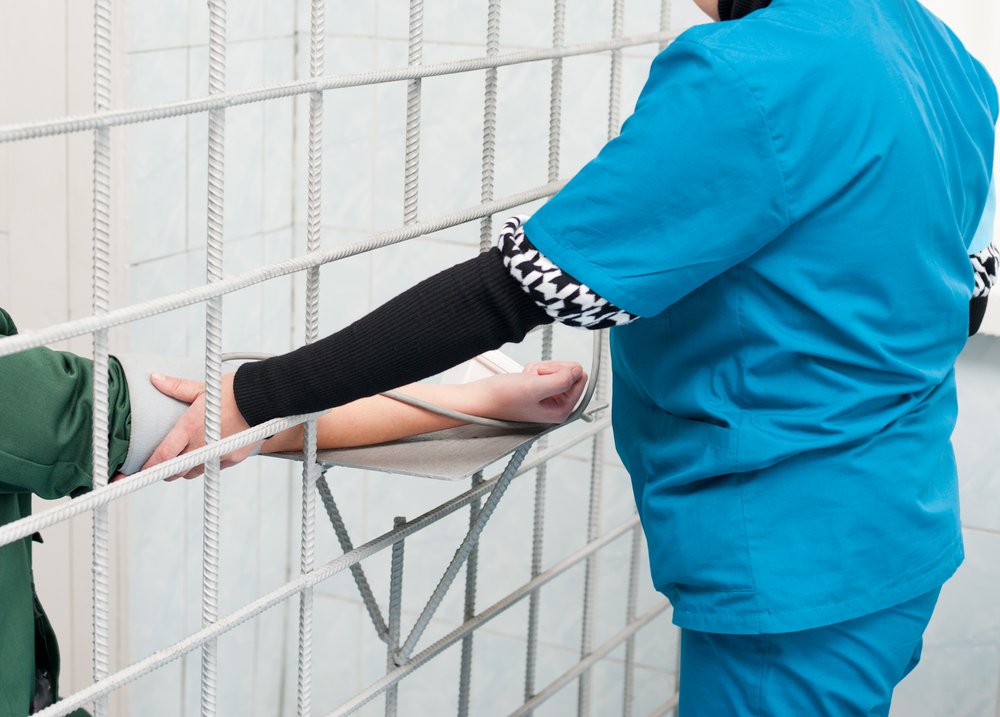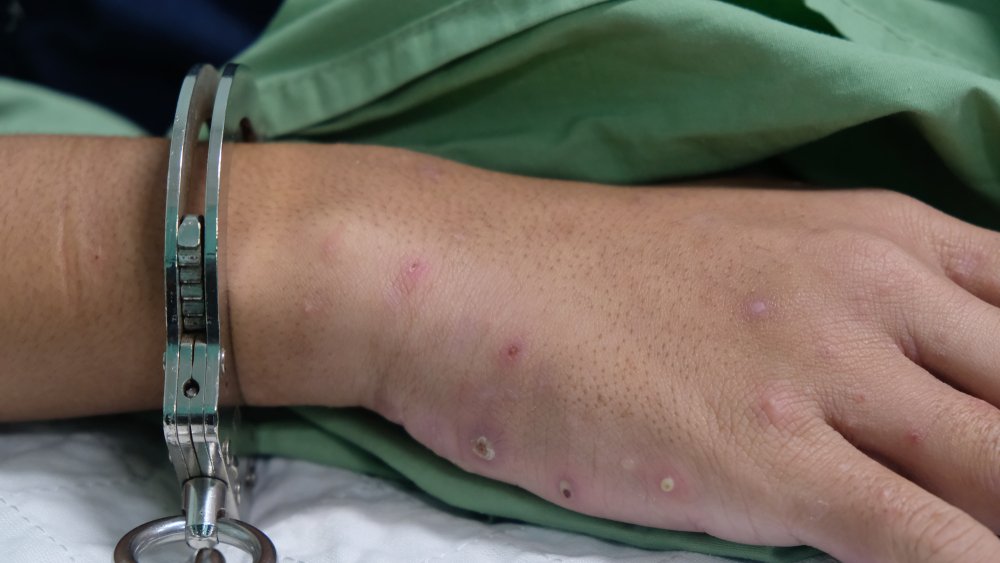The California Department of Corrections and Rehabilitation has a “vision” to provide “constitutionally adequate medical care to patient-inmates.”1
This is good news, surely. But why isn’t such a vision already a reality? After all, the United States Supreme Court – the highest court in the land – recognized this basic right over thirty years ago.
We might never know how many California prisoners have suffered or died from medical and healthcare neglect. But we can fight to ensure that no more members of this vulnerable population suffer.
We represent inmates who have been deprived of adequate health care. Our attorneys have years of experience in the criminal justice system — as prosecutors, cops, criminal defense attorneys and civil rights lawyers. We can help you and your loved ones seek justice.2
This article is about medical neglect in California’s jails and prisons. If you have questions after reading it, we invite you to contact us at Shouse Law Group for a consultation.
This article covers:
- 1. Do California inmates have a right to health care?
- 2. What do I need to show to win my prison medical neglect case?
- 3. What kind of healthcare is covered?
- 4. Is it true that judges are running prison health care in California?
You might also be interested in reading our related articles on Prison and Jail Abuse and Police Misconduct and Civil Rights Violations.

Inmates have a right to health care under the Eighth Amendment constitutional right against cruel and unusual punishment.
1. Do California inmates have a right to health care?
Inmates have a right to health care under the Eighth Amendment constitutional right against cruel and unusual punishment.
It is not a right to the best possible health care. But it is a right to at least that level of health care that a civilized society would think necessary.
“The United States Constitution does not require that the state provide its inmates with state-of-the-art medical and mental health care, nor does it require that prison conditions be comfortable,” wrote one three-judge panel that carefully examined medical conditions in California’s prisons.
“California must simply provide care sufficient to prevent the unnecessary and wanton infliction of pain or death.”3
Sadly, the CDCR has fallen woefully short of that requirement, resulting in enormous suffering and death:
Tragically, California’s inmates have long been denied even that minimal level of medical and mental health care, with consequences that have been serious, and often fatal. Inmates are forced to wait months or years for medically necessary appointments and examinations, and many receive inadequate medical care in substandard facilities that lack the medical equipment required to conduct routine examinations or afford essential medical treatment. Seriously mentally ill inmates languish in horrific conditions without access to necessary mental health care, raising the acuity of mental illness throughout the system and increasing the risk of inmate suicide. A significant number of inmates have died as a result of the state’s failure to provide constitutionally adequate medical care. As of mid-2005, a California inmate was dying needlessly every six or seven days.4
2. What do I need to show to win my California prison medical neglect case?
To prevail in a case alleging that your constitutional rights have been violated in respect of prison medical or health care, you must show that prison staff
- acted with deliberate indifference
- to your serious medical needs
We’ll discuss what this means in a little bit. But first, let’s review the 1976 case that established the jail and prison inmates’ right to health and medical care.
Estelle v. Gamble
The landmark United States Supreme Court case on prisoner medical care neglect involved a Texas inmate named J. W. Gamble, who injured his back when a 600-pound cotton bale fell on him during work duty.5
Gamble sought medical help for severe pain over a period of several months. In a series of 17 different appointments, he was given pain relievers, muscle relaxants and a bed rest directive. The pain did not cease and it turned out Gamble had high blood pressure in addition to a sprained back.
Prison officials sent him back to work despite his pain and when he could not carry out his duties they sent him to segregation.6 Eventually Gamble handwrote a complaint and mailed it off to the courts.
His case made its way to the Supreme Court, where the justices decided that the Eighth Amendment constitutional right applies when prison officials manifest “deliberate indifference to serious medical needs of prisoners.”7
Deliberate indifference to serious medical needs
So what does “deliberate indifference to serious medical needs” mean?
First, the relevant prison official must act with deliberate indifference. This means that he or she acts in a “wanton” manner – knowing that the inmate is likely to suffer in absence of care yet ignoring that risk.8
Second, the medical condition must be serious. A serious medical condition is one that could result in further injury or unnecessary suffering. It is not simply the “routine discomfort” that comes along with incarceration.
Let’s look at some examples:
Example: Annette is an inmate at the West Valley Detention Center.9 She requests mental health care because of nausea, shakes, headaches and depressed appetite. The physician assistant concludes that Annette suffers from unresolved situational stress and anxiety and declines to recommend her for further mental health care treatment.
Without a showing of graver symptoms, a court could conclude that Annette is not suffering from a serious medical condition. The court, in reliance on the medical assistant’s opinion, might conclude that such symptoms point to mild stress-related ailments and represent routine discomfort associated with incarceration generally instead of a serious mental health condition.10
Change the facts: Michael is an inmate at a maximum-security facility. At 2:00am one night, Michael notifies a medical technical assistant that he has back pain and breathing trouble. The MTA gives Michael ibuprofen but does not send him to the infirmary. At 4:30am, Michael informs the MTA that his symptoms are worse and now include neck pain. The MTA still refuses to send him to the medical ward. At 5:45am, the MTA walks by Michael’s cell and notices that has a strange breathing pattern. The MTA finally sends the now semi-conscious Michael to the infirmary. The MTA and infirmary nurse take no further action until 7:00am, when he is taken to the hospital and diagnosed with an intracranial hemorrhage. Michael slips into a coma and dies shortly thereafter.
Michael clearly had a serious medical condition and the MTA and nurse probably also evidenced deliberate indifference to that serious condition by failing to provide a higher level of care sooner.11
Prisoner medical neglect can also be a crime
Inmate health care is covered by state criminal law as well as the U.S. Constitution.
California Penal Code Section 673 makes certain kinds of prisoner medical care neglect a misdemeanor crime.12

Inmates have a right to health care for the full range of serious medical conditions.
3. What kind of healthcare is covered?
Inmates in California’s prison system suffer from many different serious medical conditions, including
- hypertension,
- epilepsy,
- diabetes,
- lupus and
- kidney stones.13
- A 2004 study found that prisoners in the U.S. had higher rates of AIDS, tuberculosis, Hepatitis C and asthma than people in the general population.14
Inmates also tend to suffer from high rates of mental illness and substance abuse. As inmates age, they need the same kinds of geriatric care that the rest of us do.
Inmates have a right to health care for the full range of serious medical conditions:
- serious physical health conditions15
- serious dental health conditions
- serious mental health conditions
- medical emergencies
- serious future medical conditions16
Title 15 of the California Code of Regulations also provides governance on the scope of prisoner medical care. Section 3350, for example, says that the department “shall only provide medical services for inmates which are based on medical necessity and supported by outcome data as effective medical care.”17
Section 3354 provides, among other things, for sick calls and dental treatment.18
Section 3369, together with Penal Code Sections 2670 through 2680, deal with shock therapy.19
4. Is it true that judges are running prison health care in California?
It is true that federal judges and their appointees are overseeing many aspects of inmate health care in California. This resulted from several major lawsuits that exposed severe deficiencies in the system.
Some of the California court cases addressed:
- medical needs generally20
- mental health needs21
- dental needs22
- women’s health needs23
- youth health needs
- medical care at California Medical Facility24
- medical care at Pelican Bay State Prison25
- needs of HIV-positive inmates26
- needs of inmates with disabilities27
Judges will continue to continue to monitor prison health care until the CDCR brings it in line with constitutional standards:
Federal courts do not intervene in state affairs lightly. Principles of federalism, comity, and separation of powers require federal courts to refrain from addressing matters of state government in all but the most pressing of circumstances.. Unfortunately, during the 8 years of the Plata litigation and the 19 years of the Coleman litigation, the political branches of California government charged with addressing the crisis in the state’s prisons have failed to do so. Instead, the rights of California’s prisoners have repeatedly been ignored. Where the political process has utterly failed to protect the constitutional rights of a minority, the courts can, and must, vindicate those rights. We do so here, recognizing the seriousness of our action and with the hope that California’s leadership will act constructively and cooperatively, and follow the mandate of this court.so as to ultimately eliminate the need for further federal intervention.28
Making vision reality
California inmate deaths appear to be on the decline.29
Yet 61 inmate deaths in 2008 were classified as “possibly preventable.” They involved 147 lapses in care, including lapses attributed to failure to recognize, identify or adequately evaluate important symptoms or signs.
Another 5 inmate deaths were classified as “likely preventable,” with 22 extreme departure lapses. The lapses ranged from failure to adequately assess and treat a red flag symptom in an asthma patient, to failure to evaluate and manage a serious symptom of headache in an HIV/AIDS patient.
Any preventable death is a death too many, and cruel and unusual punishment has no place in a civilized society – whether it comes from guard abuse or medical neglect.
Hopefully, the CDCR will continue to implement changes to effectuate its vision of constitutionally adequate prisoner health care.
Then perhaps fewer inmates will die possibly preventable deaths, the “likely preventable” classification will slip off the charts altogether and California’s prisoners will be able to serve their time without needless suffering.
Our California Civil Rights Lawyers Can Help.

If you or a loved one is in jail or prison and are being medically neglected and you are looking to hire an attorney for representation, we invite you to contact us at Shouse Law Group. We can provide a free consultation in the office or by phone. We have local offices in Los Angeles, the San Fernando Valley, Pasadena, Long Beach, Orange County, Ventura, San Bernardino, Rancho Cucamonga, Riverside, San Diego, Sacramento, Oakland, San Francisco, San Jose and throughout California.
You might also be interested in reading our related articles Police Use of Tasers, Police Use of Pepper Spray, and Racial Profiling.
Incarcerated in Nevada? See our article about suing for medical neglect in Nevada jails and prisons.
Helpful links:
- Prison Law Center
- American Civil Liberties Union – Southern California
- American Civil Liberties Union – Northern California
- Center for Constitutional Rights – Criminal justice and Mass Incarceration
- National Lawyers Guild – Jailhouse Lawyers Handbook
- Lockup series on MSNBC
- http://www.insideprison.com
- http://prisonphotography.wordpress.com
- http://www.prisonradio.org
- http://www.womenandprison.org
- http://www.justdetention.org/
- Legal Services for Prisoners with Children
Legal References:
- Achieving a Constitutional Level of Medical Care In California’s Prisons: Thirteenth Tri-Annual Report of the Federal Receiver’s Turnaround Plan of Action (January 15, 2010).
- Our California Civil Rights Lawyers have local offices in Beverly Hills, Burbank, Glendale, Lancaster, Long Beach, Los Angeles, Pasadena, Pomona, San Diego, San Francisco, Torrance, Van Nuys, West Covina, and Whittier.
- Coleman v. Schwarzenegger, No. s-90-0520 (Three-Judge Court Opinion and Order) (“Coleman Order“), citations omitted, 6.
- Id. See also Robert Weisberg, California’s Dysfunctional Prison System, AmericanLawer.com (July 2008)
- Estelle v. Gamble (1976) 429 U.S. 97. See also William Roid, “30 Years After Estelle v. Gamble: A Legal Retrospective,” published in CorrectCare (summer 2006) [discussing historical antecedents of the public’s duty regarding inmate care]
- Id, Justice Stevens, dissenting (“Gamble was placed in solitary confinement for prolonged periods as punishment for refusing to perform assigned work which he was physically unable to perform.”)
- Id at 104.
- Id at 106.
- Located in Rancho Cucamonga, the West Valley Detention Center is the primary jail facility in San Bernardino County for inmates serving local time or awaiting trial.
- Doty v. County of Lassen (9th Cir. 1994) 37 F.3d 540 (“Doty’s mild stress-related ailments are the type of routine discomfort that may result merely from incarceration and the concomitant separation from one’s family. A serious medical need requires an ailment of a greater magnitude or with a cause separate from confinement. Since Doty was not suffering from a serious medical need, no constitutional violation occurred.” citations and internal quotations omitted)
- Madrid v. Gomez 889 F.Supp. 1146, 1206 (N.D. Cal 1995).
- California Penal Code Section 673. See also California Penal Code 147 PC – Inhumanity to prisoners.
- Madrid v. Gomez, infra, 889 F.Supp. 1146, 1200.
- Improving the Delivery of Health Care at State Prison Background Briefing paper (Sept. 2004)
- An inmate has even received a heart transplant, which caused great controversy.
- Helling v. McKinney (1993) 509 U.S. 25 [future risk caused from environmental tobacco smoke covered if two-part test established]
- California Code of Regulations, Title 15, 3350
- See California Code of Regulations, Title 15, 3354.
- See California Code of Regulations, Title 15, 3369 and California Penal Code 2670 through 2680.
- Coleman Order; see also Plata v. Schwarzenegger, No. 3:01-cv-01351 (9th Cir. 2010).
- Coleman v. Wilson (E.D. Cal 1995) 912 F.Supp. 1282, 1316.
- Perez v. Tilton c-05-5241 Amended Stipulation and Order (N.D. Cal 2006).
- Shumate v. Wilson (E.D. Cal 1997) s-95-0619 (Settlement Agreement).
- Gates v. Dukmejian (9th Cir. 1992) 987 F.2d 1392.
- Madrid v. Gomez, infra, 889 F.Supp. 1146, 1280.
- Gates v. Dukmejian, infra, 987 F.2d 1392.
- Armstrong v. Davis (9th Cir. 2001) 275 F.3d 849.
- Coleman Order, 182.
- Analysis of 2008 Death Review, Kent Imai, California Prison Receivership, Dec 14, 2009).
